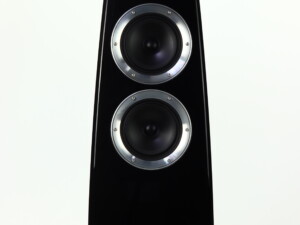Wharfedale Linton 85th Anniversary Loudspeakers and Stands – Black Oak
£850.00
Manufacturer : Wharfedale
Model : Linton 85th Anniversary
Serial Number : WH061612CGD0017
Packaging : Original
Accessories Included : N/A
Price When New : £1195.00 ish
Out of stock
Description
Here we have a pair of classically styled Linton stand mount loudspeakers from British company Wharfedale. They are in the black finish and come with the optional dedicated stands which would normally cost around £350 extra when new. All items are in very good condition and will be supplied in original factory packaging along with grilles and our regular three month warranty.
Wharfedale Say….
To celebrate its history, Wharfedale has established the Heritage Series recreations of famous models from its past, entirely re-engineered using contemporary techniques and materials. The latest loudspeaker to join this collection is the Linton.
The original Linton debuted in 1965 and the line continued in various iterations until the end of the 1970s. It was a classic model of its time, viewed as a serious hi-fi speaker but also relatively affordable. Its cabinet was substantial, big enough to hold three drive units including a good-sized bass unit, yet not overly unwieldy by the standards of the day.
The new Linton has a clear family resemblance. It, too, is a three-way standmount model – a rarity in the modern era – retaining similar proportions to the classic Linton models. Its wood-veneered cabinet has a vintage look, yet the standard of finish is distinctly contemporary.
The Linton makes use of its wide baffle by incorporating a large (by modern standards) bass driver with a 200mm Kevlar cone, mounted on a rigid, die-cast chassis. Above this sits a 135mm midrange driver, also sporting a woven Kevlar cone and housed within its own internal enclosure. Finally, a 25mm fabric-dome tweeter with a high-flux ferrite magnet handles high frequencies.
The original Linton incarnations of the 1960s and 1970s were well known for their rich and natural sound quality; the new model retains these attributes but upgrades the performance in every department. Its bass is deep and well-defined, its midrange clear and open, with free-breathing dynamics and an expansive scale that brings music to life. It is a sound you can dive into and lose yourself in, as you listen to album after album; a nostalgic nod to the past elevated to a level fit for the future.
This is a speaker that exudes authenticity, designed to appeal to the dedicated music-lover.
In keeping with a design intended to be treasured, the new Linton sports hand-matched wood veneers and optional matching stands with a similarly classic style. Custom-made to ensure each speaker is sited at the perfect height for a seated listener, the stand’s rigid metal frame ensures critical damping of unwanted vibrations, embellished with wood-veneered panels at the top and bottom to complement the speakers. The design even provides space to store vinyl records within the stand’s structure.
The Wharfedale LINTON represents one of the most iconic models in the long history of Wharfedale loudspeakers. A model that embodied the Wharfedale pioneering research through the 60s, 70s and 80s, with a bloodline dating back to 1965, LINTON has always been manufactured according to the Wharfedale principles of quality and value for money.
Specifications:
General Description: 3-way vented-box/standmount
Enclosure Type: Bass reflex
Transducer Complement: 3-way
Bass Driver: 200mm black woven Kevlar® cone
Midrange Driver: 135mm black woven Kevlar® cone
Treble Driver: 25mm soft dome
AV Shield: No
Sensitivity (2.83 v @ 1 m): 90 dB
Recommended Amplifier Power: 25-200 W
Peak SPL: 110 dB
Nominal Impedance: 6 Ω
Minimum Impedance: 3.5 Ω
Frequency Response (+/-3 dB): 40 Hz ~ 20 kHz
Bass Extension (-6 dB): 35 Hz
Crossover Frequency: 630 Hz & 2.4 kHz
Dimensions: 565 (H) x 300 (W) x 330 (D) mm
Weight: 18.4 kg (each)
Reviews
To read a review from Hi-Fi Choice magazine please click here
For a second opinion this time from US publication Stereophile please click here
















